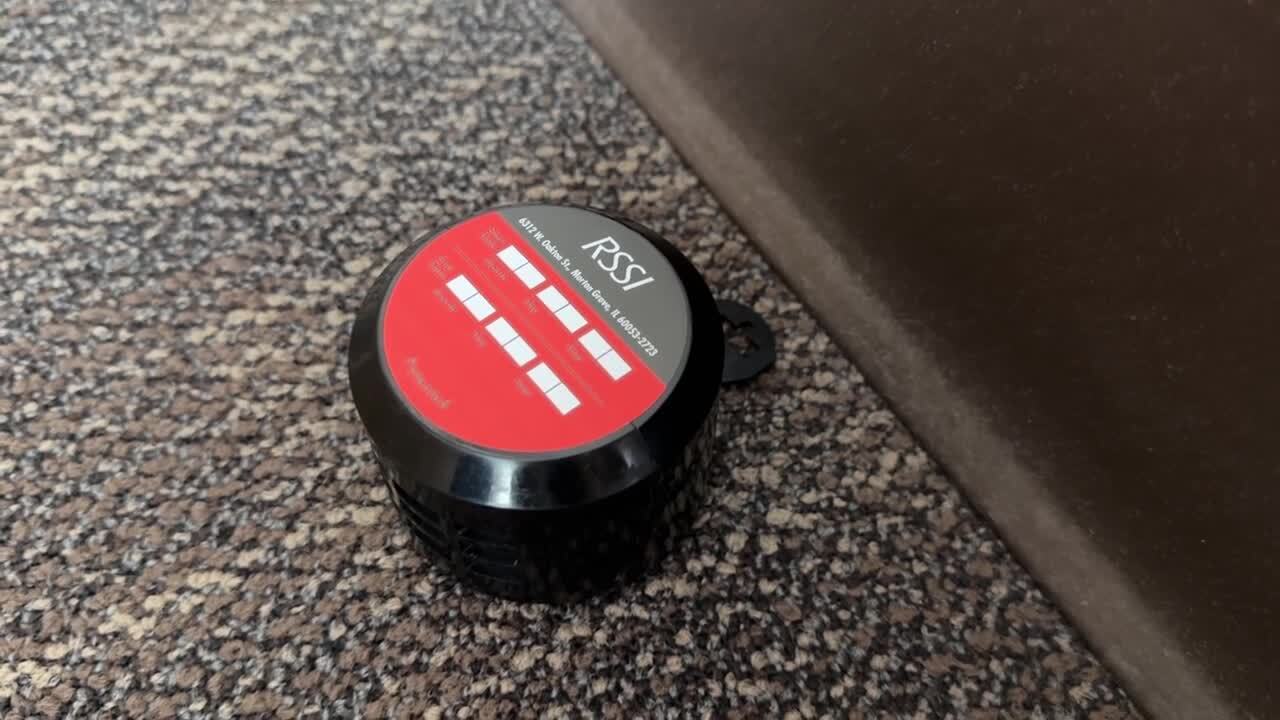GREAT FALLS — Radon is an odorless, colorless, naturally occurring gas produced by the decay of uranium in soil, rock, and groundwater.
Radon outside poses little risk as the gas dilutes in the air. However, if radon accumulates within a home, it can become a health hazard.
Patti Hausmann, a retired Great Falls resident, has been personally affected by radon.
In October of 2021, Patti and her husband Richard bought a townhouse east of Great Falls to be closer to family. When they first moved in their neighbors had mentioned radon, but they didn’t think anything of it.
It wasn’t until May of 2023 when Patti was hospitalized for pneumonia that she decided to get it checked out. It was a difficult time as she didn’t know the cause of the pneumonia and she had recently lost her husband to cancer.
The first test completed by a home inspector came back at 200pCi/L (picocuries per liter). The EPA recommends if homes are at 4pCi/L or above that mitigation should be done.
“The EPA has set a threshold of actionable at 4.0pCi/L. However, that doesn’t mean that your home is safe because there is no safe level of radon,” explained Michael Gustafson, a radon coordinator with the Montana Department of Environmental Quality.
Patti had two remediations done that only dropped her radon levels to 132pCi/L.

After that, she contacted a certified radon mitigator with the National Radon Proficiency Program which helped bring her levels down to 1.2pCi/L.
Rodger Martin, a certified NRPP Certified Mitigator, explained there are different types of mitigation that can be done depending on whether your home has a basement or a crawl space. Within a basement, it’s called a sub-slab depressurization system.
“Basically, I am going to drill a hole through the concrete floor, dig out a suction pit, about a five-gallon bucket worth of materials or more. I will run a pipe in there and seal it, run it up through the rim joist, out the rim joist, put the fan out there and vent it above the eave,” he said.
The system is creating a vacuum underneath the slab of the house to draw out the radon and bypass it to the outside.
Within a crawl space, it is a similar system called a sub-membrane depressurization system.
This includes a vapor barrier being glued to the walls and floor to get the tightest seal possible.
Then a pipe and drain tile will go underneath the plastic leading outside like the sub-slab system. Installation of these systems run anywhere between $1500 and $2500.
Within the state of Montana is it not required to be certified in radon mitigation. This means some people will mitigate it themselves and not follow EPA guidelines resulting in further expose to radon.
Only in 1993 did it became required that information on radon be disclosed prior to any purchase or sale of property.
There are a few ways to test for radon within the home. The first is a continuous monitor performed by a certified inspector. The monitor will take a measurement of the air every hour for a minimum or 48 hours, maximum of 7 days for a short-term test.
“Long-term tests over 30 days are the gold standard. There are instructions on where to place it. A lot of specific instructions on how far away from a wall, heat source, window”, said Abigail Hill, Health Officer for the Cascade City-County Health Department in Great Falls.
Long-term tests can be found for free on the DEQ website while supplies last.




